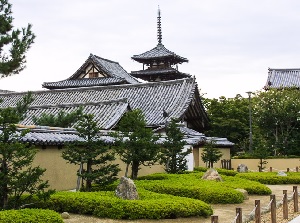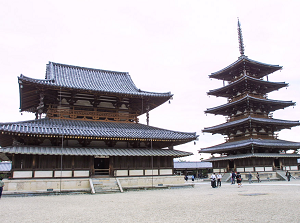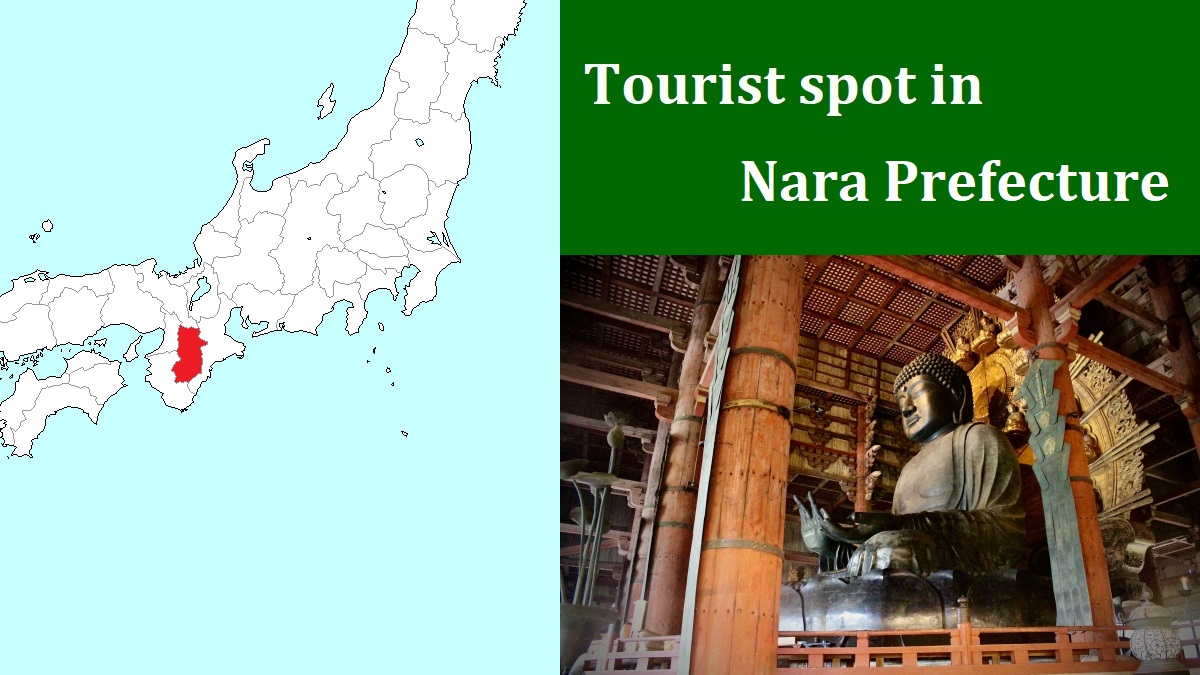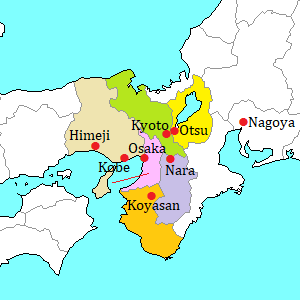Horyuji temple [法隆寺]
Horyuji is a Buddhist temple, and is located in Ikaruga town about 13 km southwest of Nara city.
"O" and "u" in the word is pronounced long, so it is read as "Hôryûji".
This temple is the main one of "Buddhist Monuments in the Horyu-ji Area" designated as a World Heritage Site.
Horyuji is regarded as the foundation in 607.
The west part of the temple grounds has the most oldest wooden buildings in the world.
It is said that Horyuji was built by Prince Shotoku (574-622).
He assisted Empress Suiko (554-628) and took the reins of government.
He built Ikaruga Palace for government in this area in 601, and constructed Horyuji to the west of the palace after that.
But there are discrepancies among the descriptions about Horyuji and Prince Shotoku in some ancient documents.
So since the 20th century, the discussions about them still continue to this day.
Some say that current temple is the original temple built by Prince Shotoku, but the others say that it was rebuilt after the fire in 670.
Additionally some say that Prince Shotoku was nonexistent person.
In this way, we have a lot of questions about the history of Japan around the 7th century.
But it is true that Horyuji was founded in the early 7th century.
Attention : In Horyuji, taking pictures is strictly prohibited in the site.
The site of Horyuji has two precincts.
The western part is called Sai-in Garan (西院伽藍) and the eastern part is called Tô-in Garan (東院伽藍)
Sai-in Garan had been completed by the 710s.
It is about 350 meters from east to west and about 300 meters from north to south.
Visitors can enter from Sai-in Garan.
Tô-in Garan was built in 738.
It is about 70 meters from east to west and about 120 meters from north to south.
It is connected by an approach about 170 meters long to the east gate of Sai-in Garan.
In the middle ages, fires sometimes broke out, but many original buildings in both Garans are fortunately existing now.
In 1878, more than 300 treasures of this temple had been presented to the imperial household.
Many of them are exhibited in Tokyo National Museum now.
After passing Nandaimon gate (南大門) rebuilt in 1438, we reach Sai-in Garan.
All buildings in Sai-in Garan including Nandaimon are designated as national treasures.
We can enter the inside with passing by Chumon gate (中門).
The central area in Sai-in Garan is surrounded with a corridor.
The middle part of the piller of the corridor is a little thicker than the edges.
It resembles to the column of the Parthenon in Athens.
Many pillers in Horyuji have such shape.

Image of Kondo and Five-story pagoda
We can see the two main buildings in the site first.
Kondo (金堂) on the right is the main temple of Horyuji.
It was built in the 7th century, and many Buddha statues created between the 7th and the 12th centuries are enshrined.
Five-story pagoda (五重塔) is the world's oldest wooden tower, and the height is 31.5 meters.
It was also built in the 7th century.
The main pillar of the pagoda was identified as a wood cut in 594 through the growth rings measurements.
Behind these building, there is Daikoudo (大講堂).
The original building was destroyed by fire in 925, then current building was rebuilt in 990.
In the site, there are Kyôzô (経蔵, Warehouse of scriptures) and Shôrô (鐘楼, Bell tower).
From Chumon gate, after walking 400 meters on the approach, we reach Tô-in Garan.
On the way, we pass through Tôdaimon gate (東大門) but it is also a national treasure.
Tô-in Garan was constructed on the site of Ikaruga Palace that the family of Prince Shotoku were living.
The palace had fallen into ruin in 738.
So high priest Gyoshin constructed this Garan in remembrance of Prince Shotoku.
Tô-in Garan is also surrounded with a corridor.

Image of Yumedono
The main building is Yumedono (夢殿).
It is an octagonal temple, and the statues of Prince Shotoku and Gyoshin and some other Buddha statues are enshrined.
On the north side of Yumedono, there is Eden, Shariden (絵殿, 舎利殿).
When Prince Shotoku was worshipping at the age of two, it is said that Buddha's ashes appeared in his hand. (Buddha's ashes are "shari" in Japanese.)
The Buddha's ashes are enshrined in this building.
By the way, many other Buddha statues and pictures of national treasure or important cultural property are exhibited in the museum Daihôzôin (大宝蔵院)
It is located to the northeast of Sai-in Garan.
How to get here
Get off at Horyuji station of JR Yamatoji Line.
By rapid train, about 13 minutes from JR Nara, about 23 minutes from Tennoji.
By route bus to Horyuji-sando, about 8 minutes from there.
When you walk on the route, it takes about 20 minutes. (About 1.2 km)



